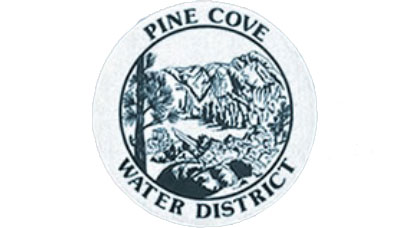Pine Cove Water fills vacant director position
Water usage up over 2018
The Pine Cove Water District (PCWD) board of directors approved Rose Venard as its newest member. She replaces former Director Steven King, who resigned Aug. 1 because he and his wife, Paula, moved out of the district.
Venard and her husband have owned property in Pine Cove since 2013 and became full-time residents a year ago.
In her email requesting consideration, she wrote, “I have read the PCWD web page and have been following the improvements that the district has been making and I would like to be a part of this well-run and operated district.”
With no other applicants for the position, Director Diana Luther made the motion to appoint Venard and the vote was unanimous, 4-0.
Finances
At the end of August, PCWD had a cash balance of $320,000, the largest in years, according to General Manager Jerry Holldber. Director Lou Padula complimented Holldber and staff on their financial management.
Holldber is continuing to work with representatives of the Federal Emergency Management Agency to obtain reimbursement for the district’s costs to repair damages caused by the February storms.
Water
PCWD customers used 3.7 million gallons in August, which was about 380,000 gallons or 11.4% more than in August 2018.
“Last year was lower and usage depends on when thunder showers occur,” Holldber told the board. The usage a year ago was lower due to a higher amount of rain that August.
Since January, PCWD water production has been 24.4 million gallons. For the same period in 2018, production was 22.8 million gallons. Production has been higher this year for several reasons.
During late winter, the freezing temperatures and flooding created numerous leaks, most of these were on the customer side of the water meter. Secondly, the district has used more water for construction projects at its Dutch Flats property. Also, Holldber has told the board for more than a year that the number of full-time residents has been growing in recent years. Finally, the absence of monsoonal rains in July and August has increased water demand for many outdoor uses that rain would obviate.
Holldber described the water system as “Operating fantastic!” The groundwater level of the district’s static well rose another 5 feet in August and is at 105 feet.
“Water is still coming through the ground,” he said. “The water level is rising.”
He also reported on the recent semi-annual testing of water quality for trihalomethanes (TTHM) and haloacetic acid (HAA) that comes from natural organic compounds in the water.
The results for the TTHM concentrations were 3.1 micrograms per liter (µ/l) and the state maximum contaminant level is 80 µ/l. The testing of the samples for the HAA could not detect any measurable concentration.
“The tests are good,” he said.





